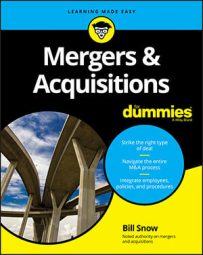Going through an M&A deal can be an intimidating process (for both the mergers and acquisitions teams), but that process thankfully follows some concrete steps. Here's the step-by-step process that nearly every M&A deal follows:
Compile a target list.
You can't buy or sell a business unless you have a list of suitable Sellers or Buyers.
Contact the targets.
Making a phone call and discussing the target's interest is important. That discussion allows you to gauge the target's interest level and whether proceeding makes sense. Knowing how to make a pitch is an art, and believe it or not, being a Buyer is far more difficult than being a Seller!
Send/receive a teaser.
The teaser (sometimes called an executive summary) is the document Seller sends to Buyer to give Buyer just enough information (the product, the customers, the problem the company solves, and some high-level financials) to make Buyer want to learn more. The teaser is usually anonymous; that is, Buyer doesn't know which specific company is sending the document.
Sign a confidentiality agreement.
Both sides agree to keep the deal discussions and materials confidential.
Send/review the confidential information memorandum (CIM).
The CIM or deal book is the Seller's bible and provides all the information (including company history, product descriptions, financials, customer info, and more) Buyer needs to determine whether to make an offer.
Submit/solicit an indication of interest (IOI).
Buyer expresses interest in doing a deal by submitting this simple written offer, most often with a valuation range rather than a specific price.
Conduct management meetings.
Buyer and Seller get a chance to meet face to face. In these meetings, Seller provides Buyer with an update of the business and guidance for future performance. Additionally, both sides gauge how compatible they are.
Ask for or submit a letter of intent (LOI).
Based on the material in the CIM and on the updates from the management meetings, Buyer submits this detailed offer with a firm price.
Conduct due diligence.
In the due diligence phase, Buyer examines Seller's books and records to confirm everything Seller has claimed.
Write the purchase agreement.
Buyer and Seller memorialize the deal in this legally binding contract.
Close the deal.
Closing is rather anticlimactic: Both sides sign lots of papers, Buyer gives Seller the money, and Seller gives Buyer the company.
Handle any post-closing adjustments and integration.
Closing isn't the end of the deal. Buyer and Seller usually have some post-closing financial adjustments, and Buyer has to integrate the acquired company into the parent company or make sure it can continue to operate as a standalone business.

